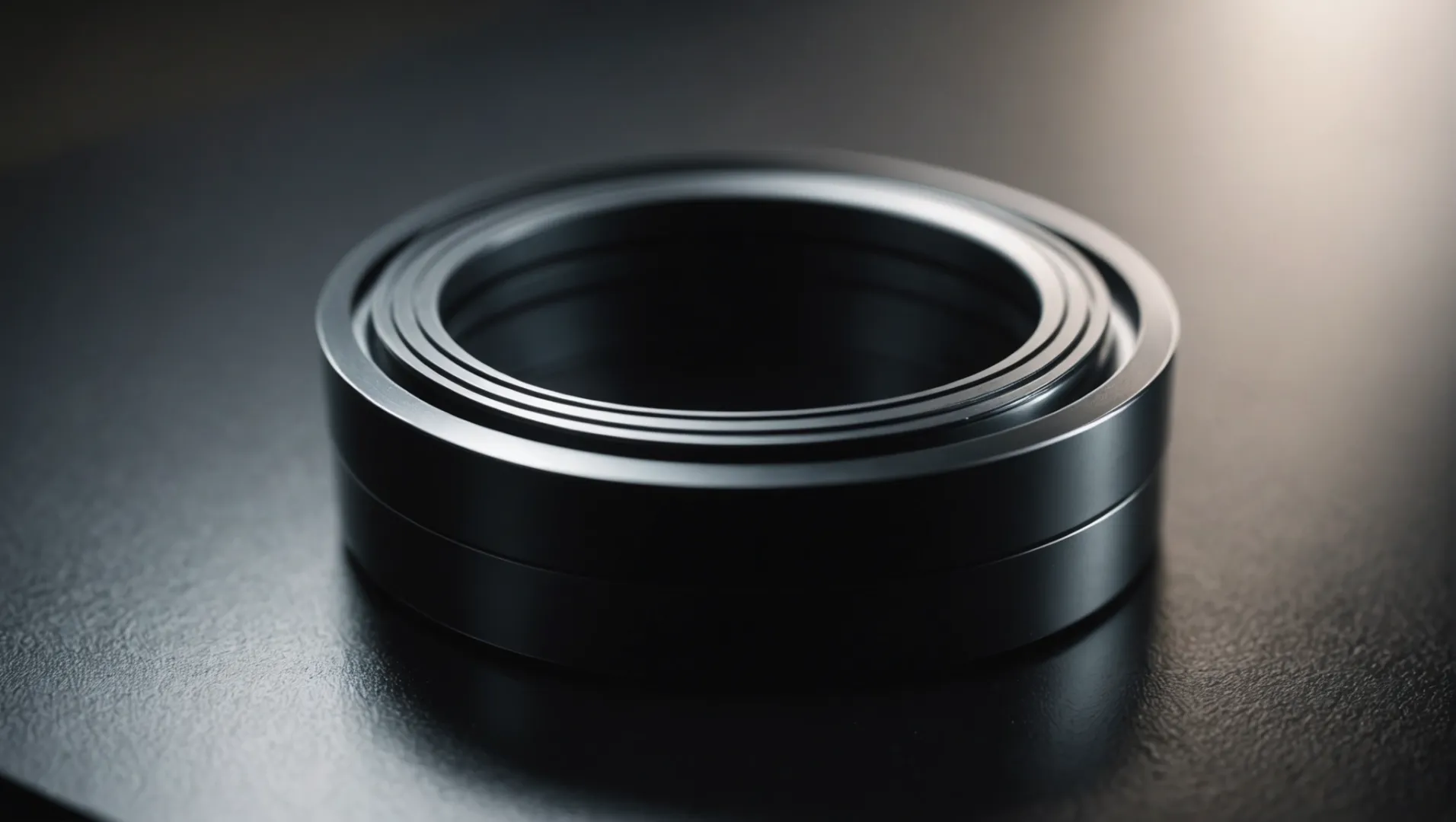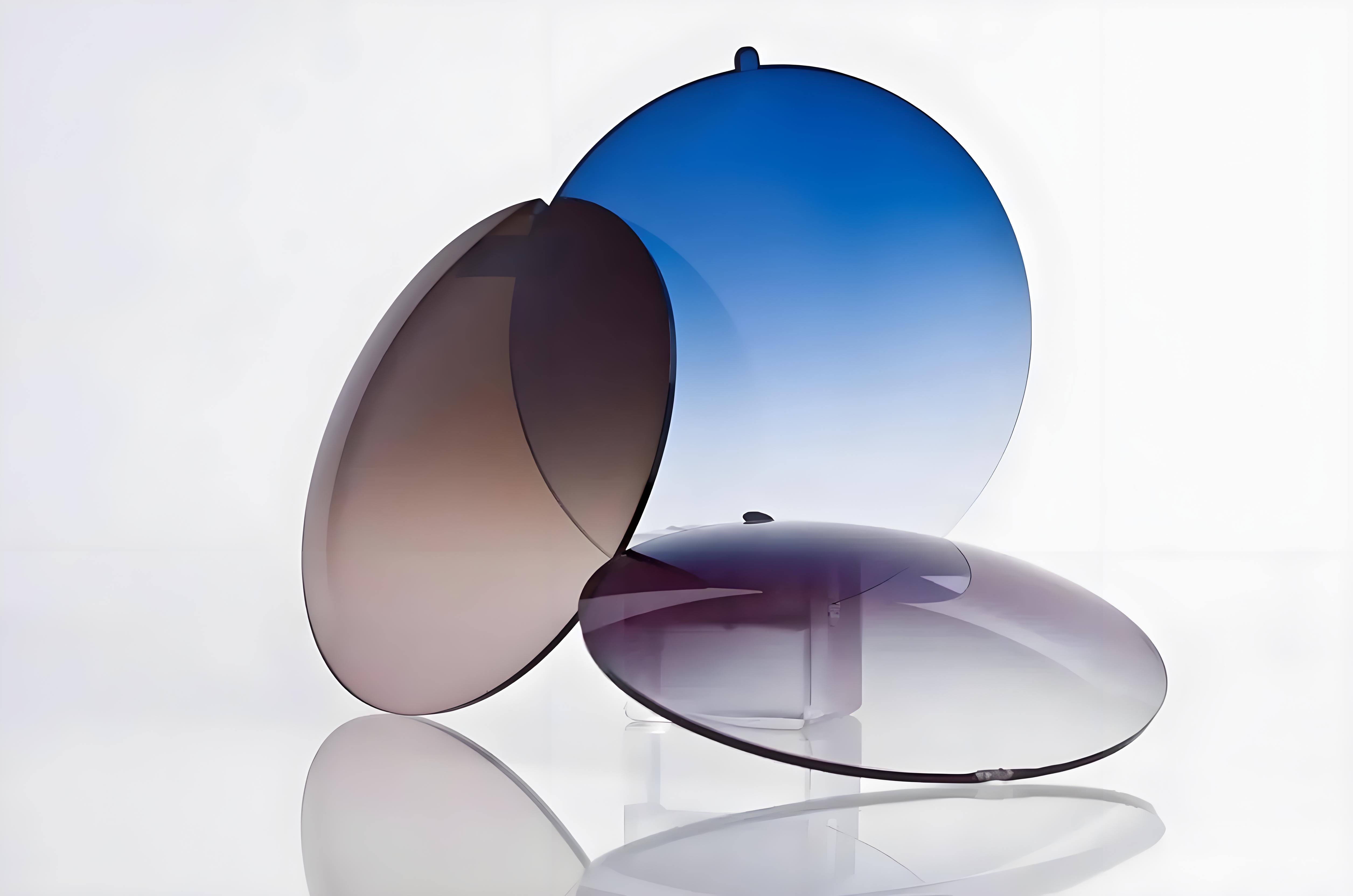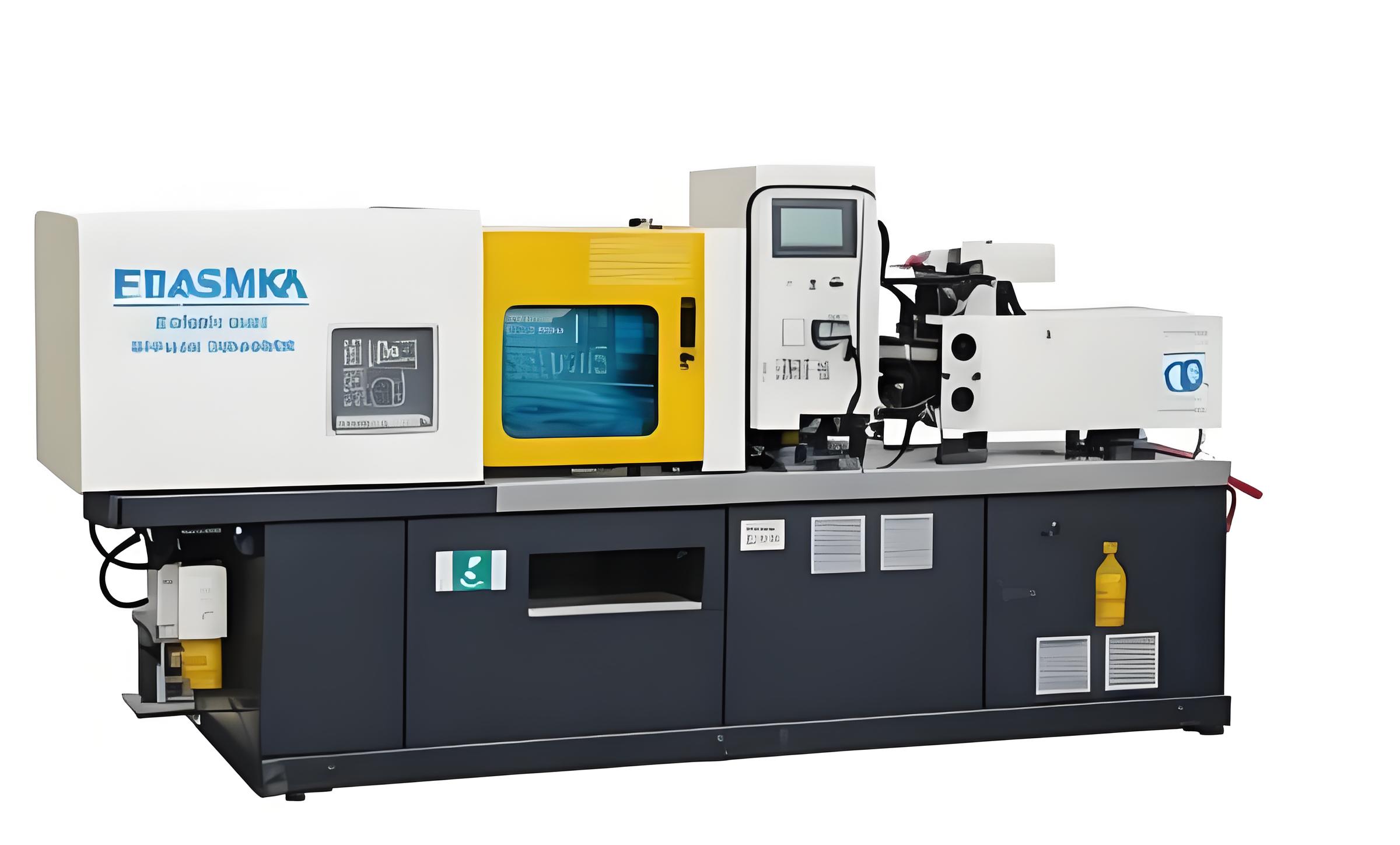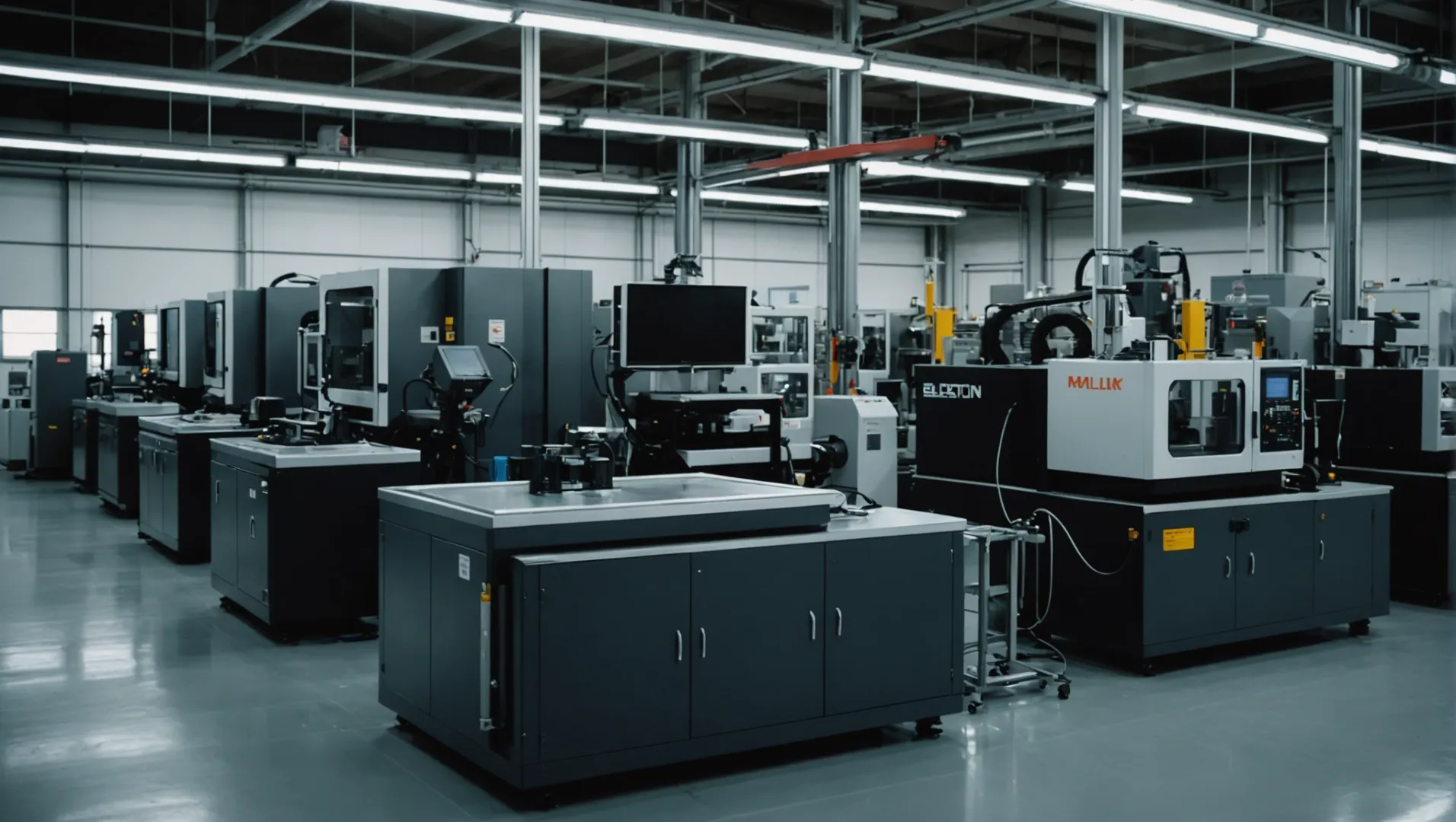
Ever held a product that just gleams? That glossy finish isn’t just for looks; it’s a mark of quality that customers appreciate.
To enhance the surface gloss of injection molded products, manufacturers should focus on selecting suitable materials, polishing the mold cavity, and optimizing injection molding parameters such as pressure and temperature.
But there’s so much more beneath the surface. Let’s dive into expert insights and techniques that can truly transform your production process and elevate your product’s aesthetic quality.
Selecting high-gloss plastics improves injection molded product gloss.True
Materials like ABS and polycarbonate naturally offer a glossy finish.

What Role Do Raw Materials Play in Surface Gloss?
Understanding the impact of raw materials on surface gloss can significantly enhance the visual quality of your injection molded products.
Raw materials critically influence surface gloss, affecting the smoothness and brightness of the finished product. Selecting appropriate plastic materials, ensuring dryness, and controlling additive ratios are key steps to enhance gloss.

The Impact of Material Selection
Choosing the right raw materials is fundamental to achieving desired surface gloss in injection molded products. High-gloss plastics like ABS (Acrylonitrile Butadiene Styrene) and polycarbonate are often preferred due to their inherent smooth and shiny finish. Additionally, integrating brighteners or modifiers can further enhance gloss.
Table 1: Comparison of Common Plastics for Surface Gloss
| Material | Gloss Level | Additional Notes |
|---|---|---|
| ABS | High | Naturally glossy; suitable for bright finishes |
| Polycarbonate | Medium-High | Durable and versatile |
| PVC | Medium | Cost-effective but may require additives |
Importance of Material Dryness
Moisture content in raw materials can lead to defects such as bubbles, which detract from surface gloss. Ensuring materials are thoroughly dried before processing is crucial. Using a desiccant dryer can help maintain optimal dryness levels.
Controlling Additive Ratios
Additives like fillers and plasticizers can alter the gloss level. It’s essential to meticulously control their ratios during the mixing process to prevent excessive or insufficient gloss. For instance, while fillers can increase strength, they may dull the surface if overused.
Ensuring Consistency Across Batches
Maintaining consistency in raw material properties across production batches is vital for uniform gloss levels. Implementing robust quality control measures can mitigate variations that might impact gloss. Implementing Quality Control Measures1 can guide you on strategies to maintain consistency.
By understanding and manipulating these aspects of raw materials, manufacturers can effectively enhance the surface gloss of their products, thereby improving both aesthetics and market appeal.
ABS is naturally glossy, suitable for bright finishes.True
ABS offers a high-gloss finish, making it ideal for shiny surfaces.
Moisture in raw materials enhances surface gloss.False
Moisture causes defects like bubbles, reducing surface gloss quality.
How Does Mold Design Influence Product Gloss?
Explore how mold design intricacies can significantly enhance the surface gloss of your injection molded products.
Mold design directly influences product gloss by affecting surface finish, material flow, and cooling uniformity. Key factors include polishing the mold cavity, optimizing gate and runner design, and controlling mold temperature.

The Impact of Mold Surface Finish on Gloss
The surface finish of a mold cavity is paramount to achieving the desired gloss on a product. A highly polished mold cavity reduces surface defects, which can lead to a smoother, shinier finish. Manufacturers often employ techniques like diamond polishing to enhance the mold’s finish.
Optimizing Gate and Runner Design
Properly designed gates and runners ensure consistent material flow during the injection process. Uneven flow can lead to surface imperfections, affecting gloss. By optimizing gate design2, manufacturers can minimize these issues, ensuring a uniform surface.
The Role of Mold Temperature
Mold temperature plays a crucial role in determining the final gloss of a product. A higher mold temperature can improve the fluidity of the material, resulting in a smoother surface. However, it’s essential to maintain an optimal temperature range to prevent defects like warping.
Cooling System Efficiency
An efficient cooling system ensures uniform cooling across the product’s surface, which is critical for maintaining consistent gloss. Overcooling or undercooling can lead to differential shrinkage, affecting the product’s aesthetic appeal. Techniques such as conformal cooling can be explored for better results.
Case Study: Implementing Design Changes for Improved Gloss
Consider a scenario where a manufacturer experienced inconsistent gloss due to poor runner design. By redesigning the runners and adjusting the mold temperature, they significantly improved the product’s gloss, showcasing the importance of thoughtful mold design in achieving aesthetic excellence.
Understanding these factors and implementing strategic design changes can dramatically improve the gloss of your products. Dive into resources on mold design techniques3 for deeper insights into achieving superior finishes.
Polished mold cavities increase product gloss.True
A polished mold cavity reduces surface defects, enhancing gloss.
Uneven cooling leads to consistent product gloss.False
Uneven cooling causes differential shrinkage, affecting gloss.
Which Injection Molding Parameters Affect Surface Finish?
Mastering the right injection molding parameters is pivotal to achieving a flawless surface finish on plastic products.
Injection molding parameters such as pressure, temperature, and cooling rate significantly affect the surface finish of molded products by influencing material flow and surface smoothness.

The Influence of Injection Pressure
Injection pressure is crucial for maintaining the flow of molten plastic into the mold. Higher pressure ensures that the material fills every intricate detail, thereby reducing surface imperfections. However, excessive pressure may lead to flash or part deformation. Balancing pressure4 is key to optimizing surface quality.
Impact of Injection Speed
A faster injection speed can enhance the surface gloss by minimizing the time the material is in contact with the cooler mold surfaces, which helps maintain a smoother appearance. Yet, too high a speed might cause jetting or flow lines. Therefore, understanding the balance between speed and material properties is essential.
Melt Temperature Control
The melt temperature dictates the viscosity of the plastic. A higher temperature generally results in better flow characteristics, allowing the material to fill fine details more effectively and achieve a smoother finish. However, temperatures that are too high can degrade the material, affecting surface quality and strength.
Importance of Cooling Rate
Uniform cooling ensures consistent shrinkage and reduces warping, which directly impacts surface smoothness. An optimized cooling system5 can prevent localized overheating or overcooling that leads to gloss variations. Implementing effective cooling strategies helps in maintaining an even gloss across the product surface.
Holding Time Adjustments
The holding or packing time allows extra material to flow into the cavity to compensate for shrinkage as the part cools. Properly adjusting holding time ensures a uniform density and reduces sink marks, enhancing overall surface finish. It’s critical to tailor holding time according to the specific plastic material and product design.
In conclusion, carefully adjusting these injection molding parameters can significantly enhance the surface finish of molded products. Understanding each parameter’s role allows manufacturers to produce visually appealing products with minimal defects.
Higher injection pressure reduces surface imperfections.True
Higher pressure ensures material fills details, reducing imperfections.
Excessive melt temperature improves surface strength.False
Too high temperature degrades material, affecting strength and quality.
Are There Additional Techniques for Improving Surface Gloss?
Beyond the basics, several advanced techniques can enhance surface gloss in injection molding.
Advanced techniques to improve surface gloss include minimizing release agent use, performing surface treatments like electroplating, and maintaining a clean production environment.

Reducing Release Agent Use
One advanced technique is minimizing the use of release agents. While essential for preventing molded parts from sticking to the mold, excessive release agents can dull the finish. Opt for alternatives or minimal applications to maintain optimal gloss levels.
Performing Surface Treatments
Surface treatments such as electroplating and painting can significantly enhance gloss. These methods not only improve aesthetics but also add a layer of protection against wear and environmental factors. Each treatment should be tailored to the specific material and product requirements.
- Electroplating: Suitable for products needing a metallic sheen or enhanced durability.
- Painting: Provides a variety of finishes and colors, improving both gloss and visual appeal.
Maintaining a Clean Production Environment
A pristine production environment is crucial for achieving high gloss levels. Dust, impurities, and other contaminants can mar the surface finish, making regular cleaning and maintenance of the workspace essential.
Tailoring Techniques to Specific Materials
Different materials respond uniquely to techniques. For instance, ABS plastic might benefit more from electroplating processes6 than other plastics. Manufacturers should conduct material-specific trials to determine the best approach.
By integrating these advanced methods with foundational practices, manufacturers can achieve superior surface gloss, enhancing both product quality and consumer satisfaction.
Electroplating enhances gloss in injection molding.True
Electroplating adds a metallic sheen and improves surface durability.
Excessive release agents improve surface gloss.False
Too much release agent can dull the finish, reducing gloss.
Conclusion
With the right strategies in place, you can significantly enhance the gloss of your injection molded products. This not only improves aesthetics but also boosts customer satisfaction.
-
Gain insights into maintaining consistent product quality.: The first stage is the design stage, followed by Mold and Pre-Production Inspection and In Process Quality Control and Final Inspection. ↩
-
Learn why gate design is crucial for achieving optimal product gloss.: The gate architecture and its location affects cycle times, tooling costs, lead times, the location of witness marks and many other potential defects. ↩
-
Discover advanced techniques that can enhance your product’s surface finish.: Create more engaging and efficient parts, plus reduce production costs with these injection molding design tips, including living hinges, bosses, text, & more … ↩
-
Learn how varying pressure affects product surface quality.: Faster injection speeds, combined with higher melt or mold temperatures, will further enhance the gloss and smoothness of the surface. ↩
-
Discover why cooling rates are vital for consistent gloss.: The more parts you produce in a given time, the lower your costs. While the injection molding cycle time is a major contributor to the … ↩
-
Learn how electroplating enhances durability and gloss for ABS products.: Electroplating is typically preferred for ABS plastic in heavy-duty industrial applications because greater thickness from electroplating provides a number of … ↩






